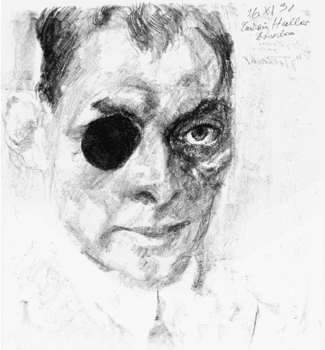
DEUTSCH

Please note that the English version of this website is still under construction and part of it shows the German content.
Ludwig Haller, as author of the book „Ontoeidetik“ also known as "Haller-Rechtern", was one of the painters of the "lost
generation“, who's „degenerate art“ was ostracized under the regime of the Third Reich.
Born with an extraordinary talent for drawing, and equipped with an analytic way of thinking, Haller, already as a student developed into a painter
and art philosopher, who scrutinised everything and who dissected the subject only to create a new piece of art.
The artworld of that time recognised his artistic and didactic skills already when he was a student through special status at the Dresdener Kunstakademie
(Academy of Fine Arts), invitation for exhibitions by the Deutscher Künstlerbund (Association of German Artists) and by awarding him the prestigious
Villa Romana Prize.
Offers for professorships at the Technical University Dresden and the Kunstakademie were the obvious steps in this development. The political regime of
the Third Reich abruptly ended his career.
Aged 17, Haller lost his right eye, the fact of which aided in his anti fascist mindset, as he was exempted from military service because of this
disability.
Until the end of WW II his activities as an artist were restricted by constant monitoring through the regime, prohibition of exhibition or sale of any
artwork, lack of income and rationing of painting materials. Thus, he focussed more on his art philosophy and on writing his theses.
His friendship with the Swiss artist Erika Streit, who relocated from nearby Czechia to Switzerland in 1943, and who was able to take some of his art work
with her, saved at least a small part of his drawings and paintings.
The bombing of Dresden spared Haller, who refused to join the National Front, from the execution by the SS.
His attempts after the war to get recognition of the offered professorships and the disadvantages in his professional career caused by the regime, were
only partly successful.
Meanwhile, Haller lived in West Germany while Dresden became part of East Germany, the connections with the former art scene vanished, and Haller fell
into oblivion. Until 2017 his name could not be found in any art directory.
The purpose of this website is to bring Haller back into the awareness of the world of arts.